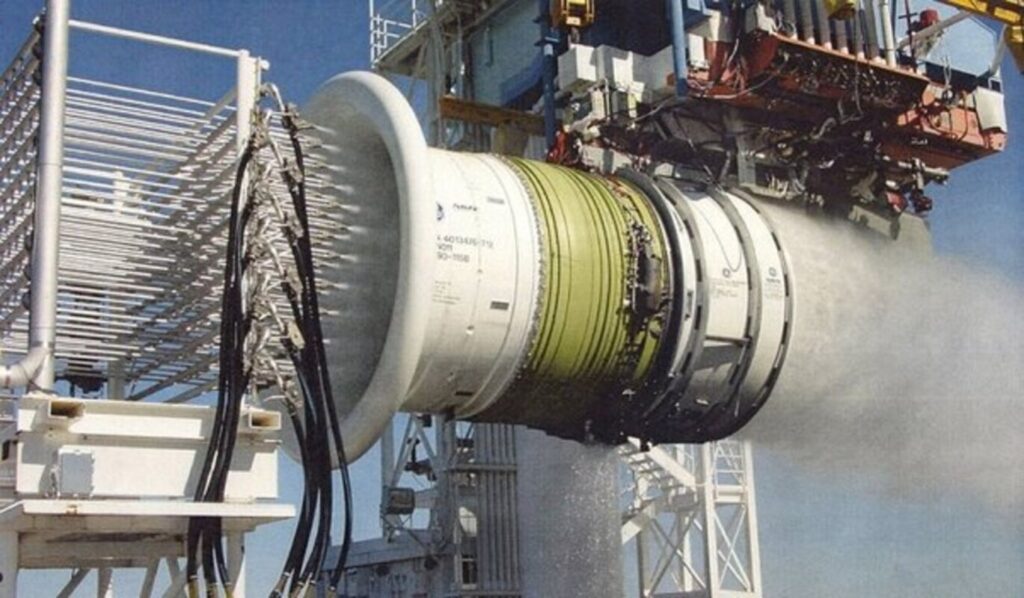In Jet engines air is compressed by fan blades and directed to the combustion chamber, where it is mixed with fuel and ignited. The hot exhaust gases then exit the engine and provide thrust. A jet engine can handle a large amount of water ingestion, as most of the water is spun out by the fan blades and flows through the bypass duct, which is the space between the engine core and the cowling.
Jet engines don’t have any flame in the primary airflow path. Air first passes through a compressor, then some of the compressed air is diverted into one or more combustors, insulated cans in which fuel and compressed air are mixed, burned, then mixed with the rest of the already compressed air. The resulting hot mixture then drives a turbine to power the engine.
In order for rain to kill the engine, enough water would have to enter the core and reach the inside of the combustors in enough quantity to cool them below the ignition temperature of the fuel air mixture. This is prevented by simply making the air entering the combustors make a sharp turn that the denser water cannot make (and depending on the engine, using similar tricks at other key locations).
The bypass air does not enter the combustion chamber, but rather provides additional thrust and cooling for the engine core. Therefore, only a small fraction of the water actually reaches the combustion chamber, where it is quickly vaporized by the high temperature.
The combustion chamber of a jet engine can reach temperatures of up to 900 °C (1,650 °F), which is much higher than the boiling point of water. So any water that enters the combustion chamber is instantly converted into steam, which does not affect the combustion process significantly. The pressure in the combustion chamber is also very high, which prevents water from condensing or freezing on the engine components.
Jet engines have to meet certain standards and regulations for water ingestion, which are based on extensive testing and simulation. They are exposed to artificial rain and ice during the certification process, and they have to demonstrate that they can operate safely and reliably under these conditions. These engines also have features that prevent or minimize the effects of water ingestion, such as heated intakes, anti-icing systems, water separators, and drain valves. These features help to prevent ice formation, water accumulation, and corrosion in the engine.
These are some of the reasons why rain does not affect jet engines. Jet engines are robust and resilient machines that can cope with various weather phenomena, such as rain, snow, hail, and clouds.
Authors – C Stuart Hardwick & Erika






